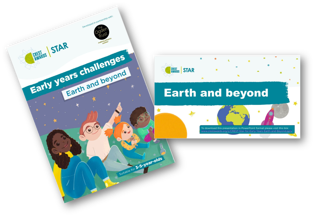Blog
Posted:
14 May 2025
Ten top tips for adapting resources for SEND learners

In our blog 'Adapting resources for SEND learners', we shared interviews with two teachers working in special schools - John Laughton from Maltby Hilltop School and Jessica Smith from Co-op Academy Delius.
Here are ten top take-ways you can implement in your school:
- Understand Individual Needs and Abilities: Recognize that learner with SEND have diverse needs and abilities. Grouping by pathway based on need rather than age (as seen at Co-op Academy Delius) allows for more targeted adaptation. If this isn’t something your school ordinarily does, you could use special days and weeks, like British Science Week, to try out this approach.
- Connect to Existing Knowledge and Experiences: Link STEM* activities to what students already learn in the classroom or experience in their daily routines. This makes the learning more relatable and understandable. For example, using planting and food-based activities from the British Science Week Early Years activity pack because they align with continuous provision.
- Incorporate Sensory Elements: Enhance activities with tactile, auditory, visual, and other sensory experiences to make them more engaging and accessible. Examples include using furry and shiny materials to represent animal adaptations, and providing hot and cold items to discuss climates.
- Utilise Visual Aids: Employ visual representations such as photos and picture cards to support understanding, especially for visual learners. The "Amazing animal adaptations!" activity in the British Science Week Primary activity pack is a good example of this.
- Provide Non-Verbal Communication Options: Offer alternative ways for non-verbal students to express their learning, such as using symbols (e.g., Boardmaker) for one-word answers or colourful semantics to build sentences.
- Foster Two-Way Communication and Autonomy: Ensure that resources and activities allow for a dialogue with students and give them as much control as possible in their engagement with the topic.
- Consider Recognition and Achievement: Explore opportunities for students with SEND to gain recognition for their efforts and engagement in STEM, such as through CREST Awards, which can be adapted and provide a sense of accomplishment.
- Adapt Existing Resources Flexibly: Don't be limited by the suggested age ranges of resource packs. Be prepared to mix and match activities from different packs and modify them to suit your learners' specific needs.
- Utilize Accessible Vocabulary and Support Materials: Look for resources that include adapted vocabulary sheets and workbooks, such as the Widget vocabulary sheet in the "Design and make a pizza box" CREST project.
- Think Outside Traditional Science: Broaden the definition of science to include everyday activities like cooking and gardening, making it more relatable and accessible for students with SEND.
*STEM is an acronym for science, technology, engineering and maths


